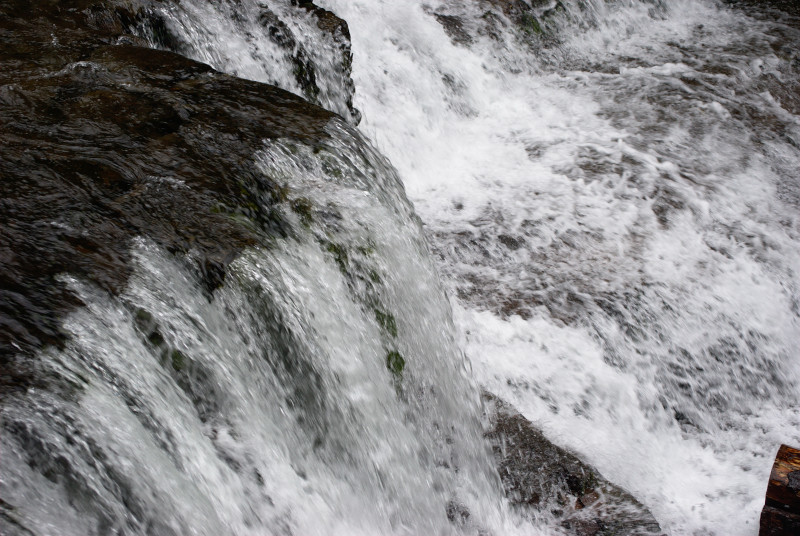Update: Medicare has introduced special items to enable access to treatment via telehealth for people who may be required to self-isolate, or who are in high-risk groups. Please contact us via the links at the bottom of this page if you feel this might be applicable to your situation.
We’ve now produced a video introducing similar concepts to this post. If you prefer a video format, check it out here: How to cope and thrive in the face of COVID-19
We’ve all no doubt heard the advice by now to not panic in the face of the arrival of COVID-19 in Australia and the beginnings of its spread within our communities. But what is the purpose of this advice – “don’t panic”?
As a situation that carries danger unfolds – like the bushfires Australia faced a few months ago, and now the outbreak of this virus globally – there are certain natural, self-protective human instincts that spring into action. These are instincts that have helped our species to weather many crises, over many thousands of years, before now. But tied up with these instincts that have allowed us to become what we are today is a strange paradox – these same instincts that help us can cause us harm. Those instincts that drive us to keep ourselves and our loved ones safe can wind up with us fighting in the aisle of a supermarket over a packet of toilet paper!
As a psychologist, I get to work with people daily who are battling with the harmful side of these protective instincts, and try to pass on to them some strategies and skills that can help them regain balance, so their instincts are once again working for them.
So I wanted to offer a few simple, practical pieces of advice to anyone who might be finding themselves feeling uneasy about the outbreak of COVID-19, and uncertain what to do with that recommendation: “don’t panic.”

Tip 1: understand there are two sides to your response to danger
Imagine your response to danger as involves two different pieces of machinery: one primitive and imprecise, but reasonably effective; the other more intricate and advanced. Imagine, too, that the more advanced piece of machinery actually requires the primitive one to be operating in order to function properly.
When we are confronted with a potential danger or threat, our “primitive” machine is our emotional fear response. It is something that we feel. That feeling is an extremely powerful motivator of action.
When our fear response is triggered it sets of a chain reaction of events in our body: release of adrenaline; increased heart rate; faster breathing; changes in the operation of our digestive system; … and so-on. These events in the body are all orchestrated to help us either fight the danger, run away from it, or freeze (in the hope the danger passes without “catching” us).
The “advanced” machinery of our danger response is our problem-solving ability. This is appropriate to dangers that are urgent, but not immediate: such as listening to news reports warning that bush fires are approaching your area. In such a situation our problem-solving responses help us to make a rational assessment of the options before taking action. This problem-solving process can, potentially, be the difference between a life-saving decision and a life-ending one: just checking what roads are safe to travel before leaving, for example, might save your life.
In the right balance, the primitive machinery of our fear emotions gives us the motivation and urgency to put to work the advanced machinery of problem-solving without delay.
However, there is a kind of “safety-mechanism” built-in to this. This mechanism is meant to prevent us from pausing to solve a problem in circumstances where immediate action is critical. For example, if you are being chased by something and running to safety, the last thing you want is to be slowed down by your problem-solving mechanism having you hesitate between two paths you could take, trying to pick the “better” path! So, when the primitive system assesses the level of danger to be sufficiently high and immediate, it starts to take the other system off-line. This means that there is a literal change in the blood-flow in our brains, shutting down the areas responsible for more complex planning and decision-making!
This is why you might have experienced occasions where under high pressure and high stress you made decisions that on later reflection did not seem very wise or rational.
The balance between the primitive and advanced systems of danger response can be directly experienced by playing a modified game of chase: the person who is “it” calls out a simple maths sum, like 8+4. They can immediately start chasing the other players – but the other players aren’t allowed to run away until they’ve called out the correct answer!
Because even a game of chase partially activates our primitive danger responses, we suddenly find it a bit harder to solve a simple maths problem! And the closer the person who is “it” gets to us, the more the solution eludes us!

Tip 2: get informed, and make a simple plan
Gather the right information from reliable, trustworthy sources. In this process, try to limit the load on your problem-solving to free up the resources of your advanced machinery for doing the real job of keeping you safe. Don’t try to understand the whole situation from first principles. Don’t go asking questions like “where did this come from?” and “why is this happening?” that can lead you down an unhelpful path into irrelevant information, or even conspiracy theories. None of that will help you address your immediate threat. However, understand your brain will want to go there because the primitive system is driving you with the feelings of urgency.
The useful questions to ask are these:
- What do I need to know to stay safe?
- What do I need to do to be prepared?
In answering the questions, try to remember that usually, even for really major crises, the steps to preparedness are relatively simple. It is easy to try to know everything and do everything to be prepared – but this quickly becomes more costly to us than it is beneficial (and ends up fueling our fear instead of quelling it). Luckily for us humans, we are by nature social and altruistic (believe it or not), so most people will instinctively team up to help each other out: meaning you don’t need to be perfectly prepared and resourced.
Trust the doctors, scientists and officials who are studying the situation and offering advice genuinely want to help you be safe, and if they are advising against certain strategies (such as limiting use of face masks to protect supplies), there are good reasons for that.
For some great places to start for up-to-date information and advice:
Australian Government Department of Health Coronavirus (COVID-19) resources
Tasmania Government Department of Health Coronavirus information and resources
Because this step is reasonably simple, keep your plan to the well-established advice and stop there. Going further will actually make things worse – which brings us to tip 3.

Tip 3: soothe the fear response (unless your house is actually on fire)
The final tip, and the key to execution of the advice “don’t panic”, is to understand that once you have taken those simple steps of preparation you still won’t feel like everything is going to be okay … and that’s okay.
At this point our instincts are continuing to motivate us to either find more solutions, fight, or run. But once you are prepared, every one of those is going to make your situation worse! We seek to find more solutions by staying glued to the news, and searching the internet for the latest details on the situation. Unfortunately, though, this only makes the crisis continue to feel ever bigger, further triggering our fear response, further compelling us to search for more solutions, spiralling around until we break – into a fist-fight in Woolworths!
… or we seek to run, or freeze. We stay home from work even though the virus isn’t yet in our community; we wear face-masks wherever we go; we try to fight the pathogen: taking the advice to wash our hands well beyond sensibility to where our skin red, cracked and bleeding from excessive washing. All the while, instead of feeling better like we are trying to do, we are feeling progressively worse.
To soothe your fear response, the following strategies are known to be effective:
- first and foremost: accept your fear, tell yourself it is okay to have this feeling – that you don’t need to make it go away;
- practice slowing down your breathing – this counteracts your fear response and signals to your brain “we’re all okay down here in the body” (but be aware for the first 30+ seconds slowing down your breathing will feel a bit wrong and uncomfortable);
- prove to yourself that the world is not falling apart by continuing to engage in your normal activities – within the guidelines of the recommendations established in tip 2, do everything you can to maintain normality, as this soothes your brain!
- take up mindfulness – try out the Smiling Mind app. Accept that your mind will resist this and keep pushing you to jump back into problem-solving, fighting or running – just observe all of those urges, and accept that trying to be “mindful” will seem strange and frustrating at a time like this – yet that is the very thing that makes it worth doing;
- limit your exposure to news and information to what is strictly necessary to getting informed and making a plan – the continuous news cycle unnecessarily fuels unhelpful fear responses.
I wish you all the best in putting these strategies into practice.
If you’re in the Launceston, Tasmania region and would like an opportunity to discuss any of these concepts further, please contact the Prospect Medical Centre to make a booking to see me in person. For those in other areas, Skype appointments may be able to be arranged by contacting us through our Toowoomba office, or you may like to book in person with one of our psychologists in Toowoomba.



Leave a Reply